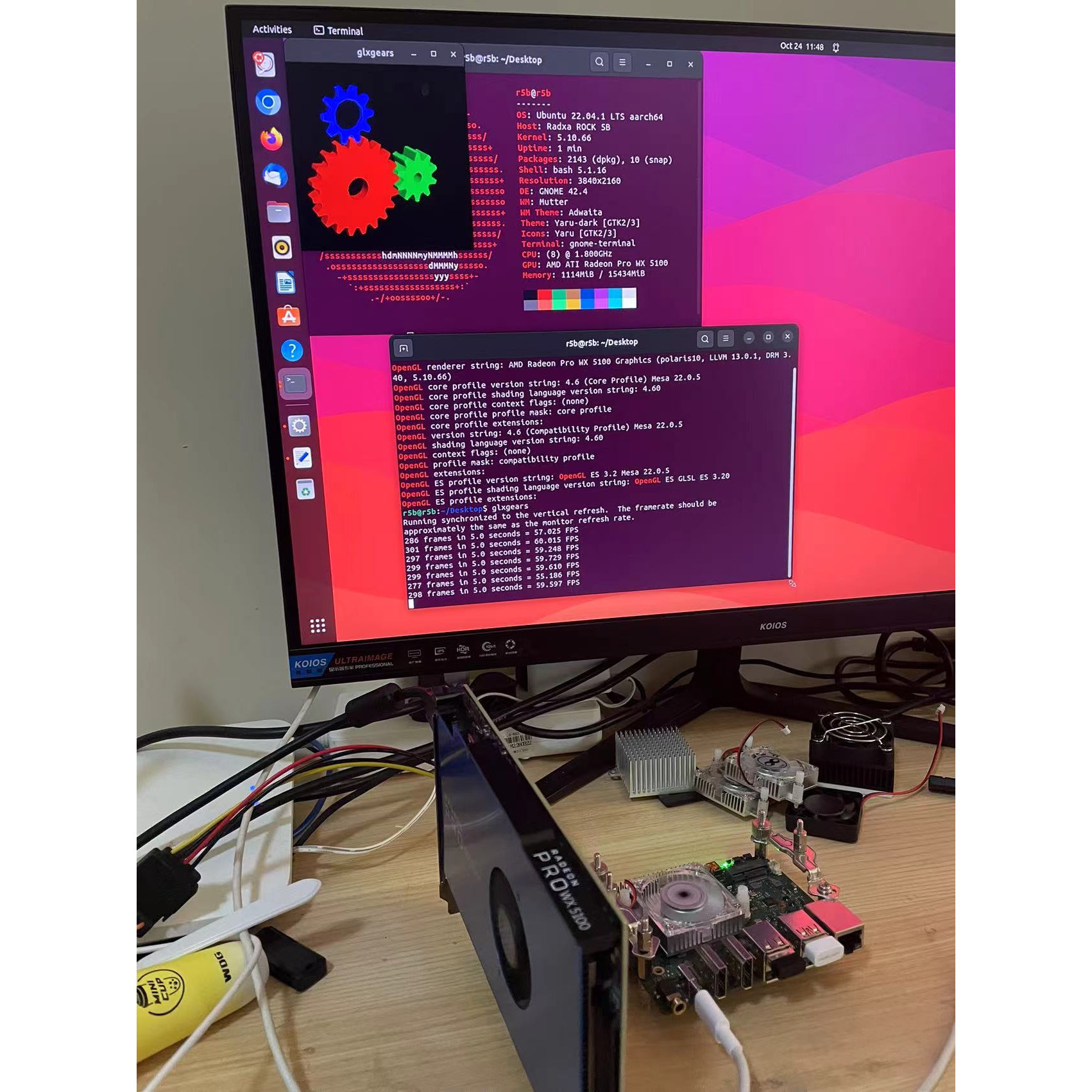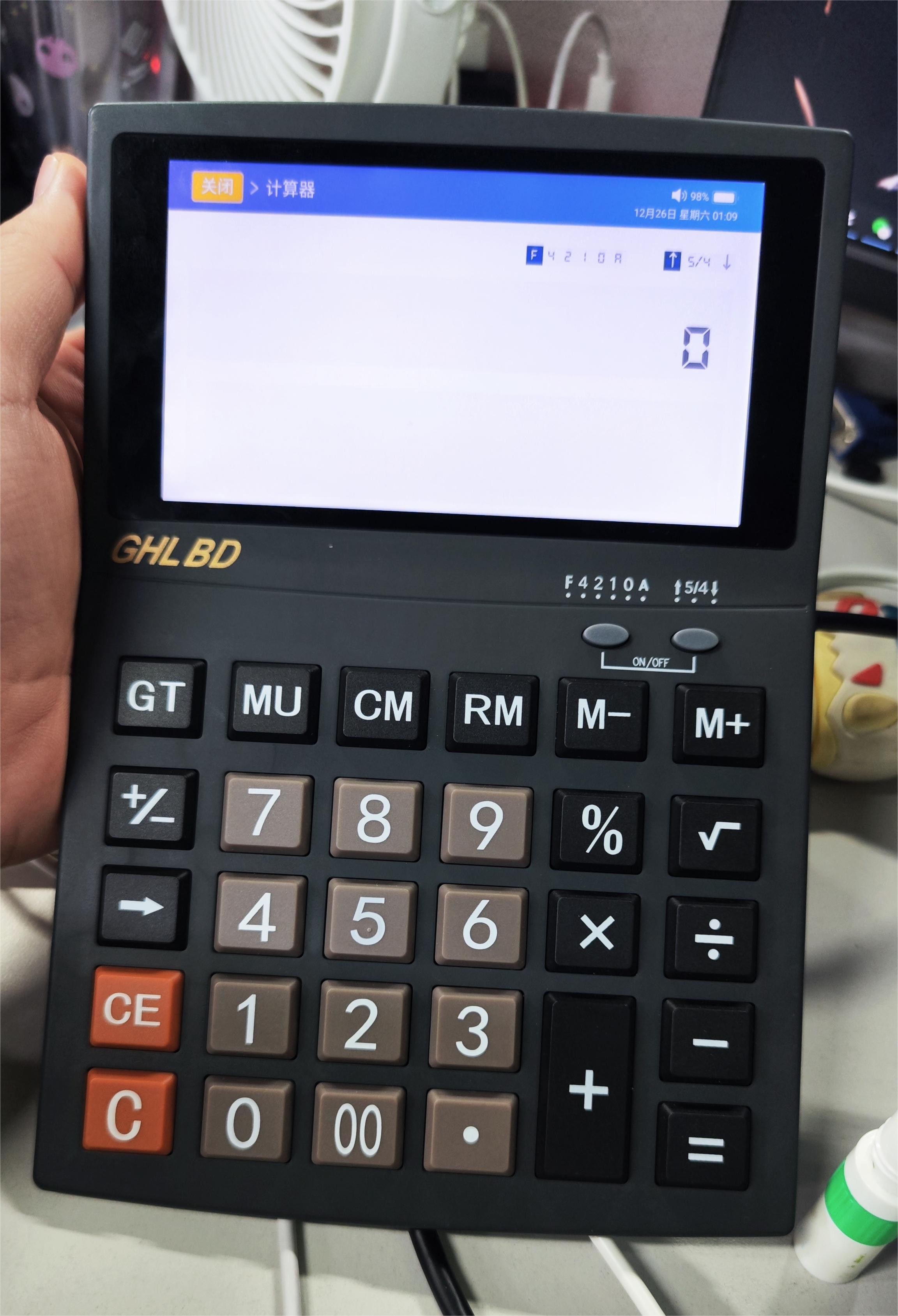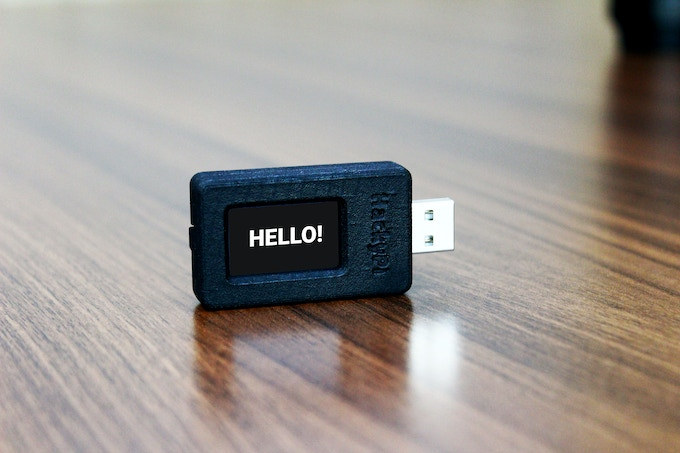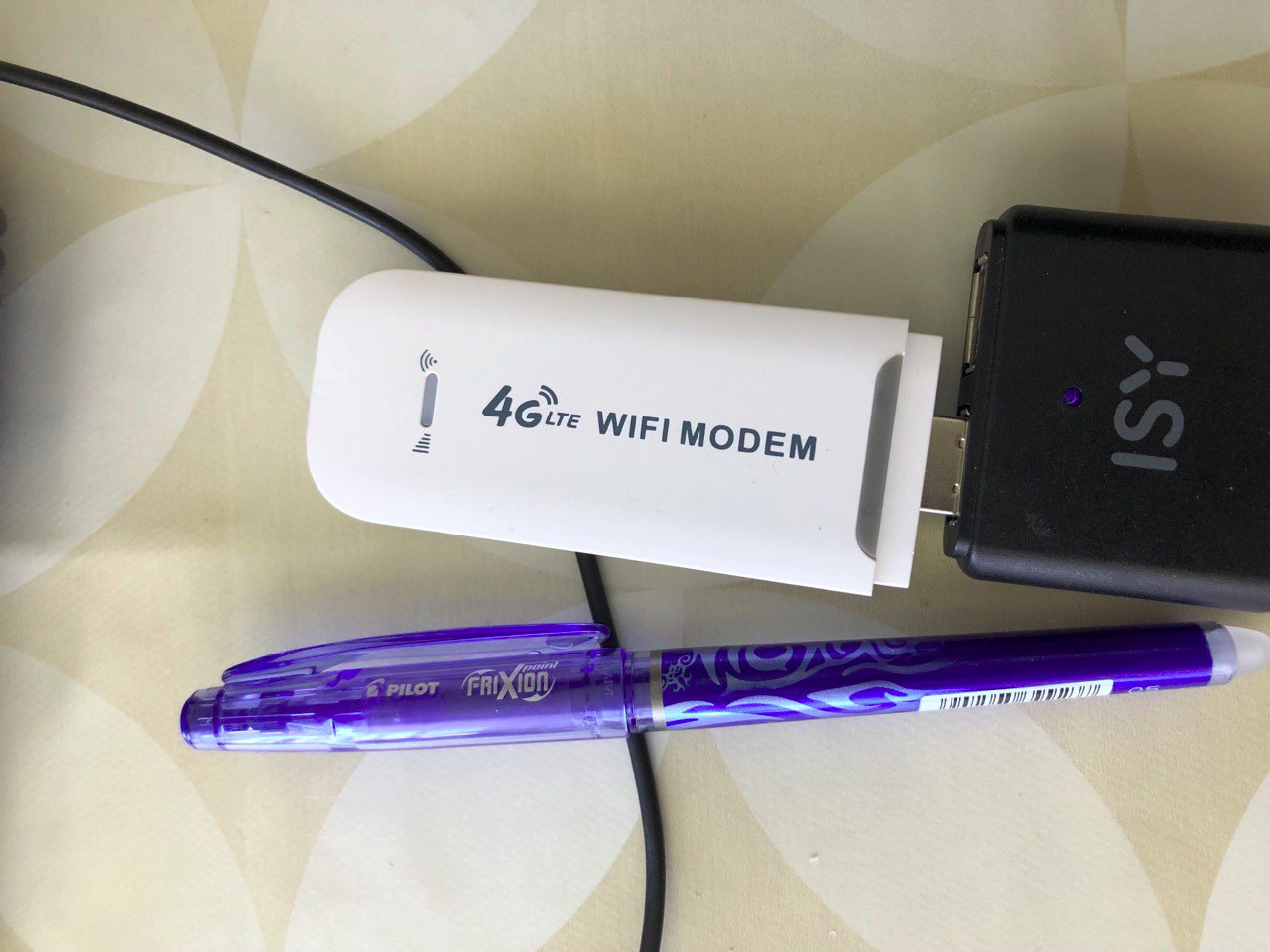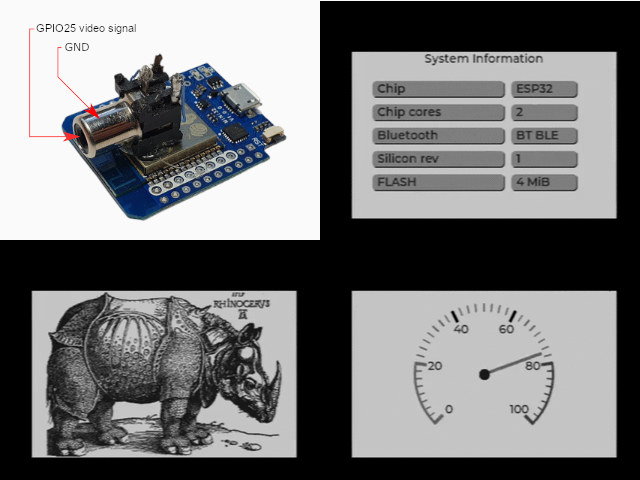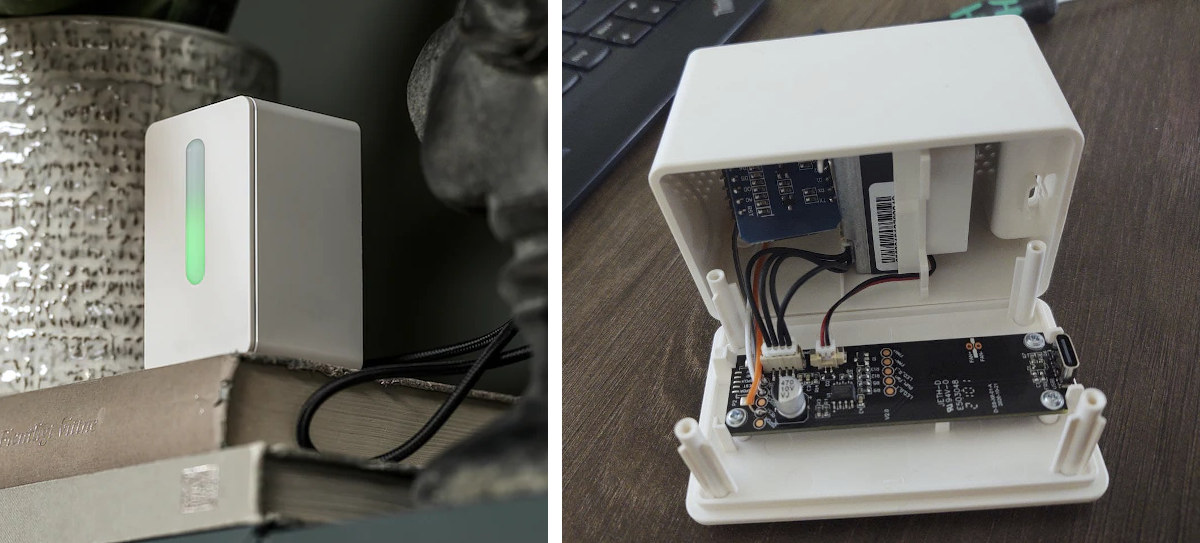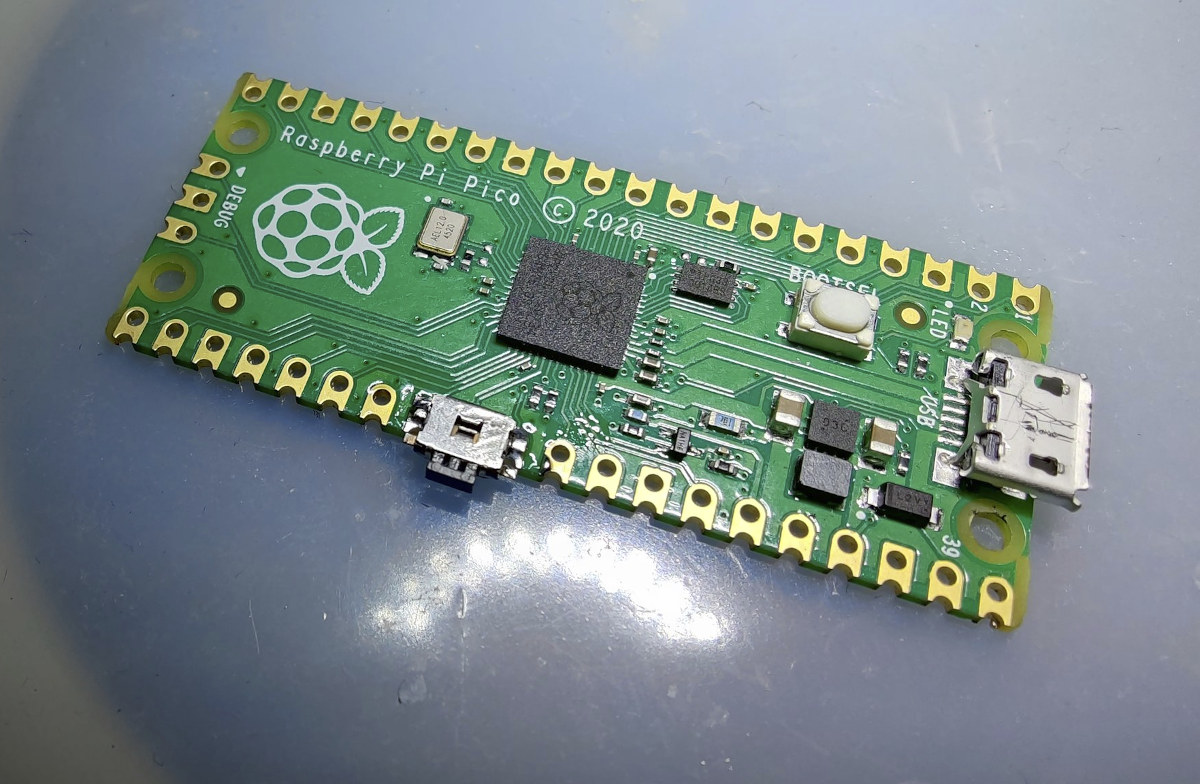Quansheng UV-K5, an inexpensive walkie-talkie/multiband radio that works in the 50 MHz to 600 MHz bands, has gotten an experimental firmware from the community that expands the range to 18 MHz to 1300 MHz, the maximum limits of the Beken BK4819 chip it is based on. The device is popular enough in the ham radio community that an unofficial blog has been created for it. The author explains that UV-K5 is better than other typical Chinese radios with “intuitive controls although the naming is a bit cryptic, and a nice crisp display”. He goes on to explain how to flash the firmware and reminds users they do this at their own risk in case they brick the device or break any regulations. The Quansheng UV-K5 supports the following bands with the stock firmware: F1: 50.0000-76.0000MHz (RX only) F2: 108-.0000-135.9750MHz (RX only) F3: 136.0000-173.9750MHz (TX and RX both) F4: 174.0000-349.9750MHz (RX […]
AMD Radeon PCIe graphics card tested with a Rockchip RK3588 SBC (Radxa Rock 5B)
When Rockchip first introduced the Rockchip RK3399 processor with a PCIe interface people initially hoped they could connect graphics card, but those hopes were quickly squashed due to a 32MB addressing limit. However, the PCIe implementation on the newer Rockchip RK3588 processor does not have such a limitation, and last November, Radxa teased a demo with an AMD Radeon Pro WX 5100 PCIe graphics card connected to the Rock 5B SBC running the glxgears demo on the Radeon GPU. I couldn’t find any instructions to reproduce this setup, but this got Jasbir interested, and he tried to do a test of his own with the Radxa Rock 5B connected to an AMD Radeon R7 520 (XFX R7 250 low-profile) through an “M.2 Key M Extender Cable to PCIE x16 Graphics Card Riser Adapter” ($14 plus taxes on Aliexpress) and powered by an LR1007 120W 12VDC ATX board. The experiment was […]
GHLBD Android calculator mini review – An Allwinner A50-based Android 9.0 calculator
I found this GHLBD calculator on a platform selling second-hand electronic products. Three labels of this product appeal to me: “Calculator”, “Android 9.0” and “Allwinner A50“. If you only look at the appearance, this calculator is not much different from that of ordinary calculators, but the Android operating system is running on it and the screen tells me that it is definitely not an ordinary calculator. When I bought it, I only spent 69 RMB ($10 US). I didn’t really have a use case for it, but curiosity drove me to buy one. I decided to introduce it and disassemble it to check out the hardware design. Function demonstration of GHLBD calculator Press and hold the ON and OFF keys on the keyboard to turn on the calculator. The Allwinner A50 processor icon and Android logo show up in the boot animation. Here, you can preliminarily confirm that the promotional content […]
HackyPi Raspberry Pi RP2040 USB dongle serves as an educational “hacking” tool (Crowdfunding)
SB Components’ HackyPi is a Raspberry Pi RP2040-based USB dongle whose main purpose is to teach ethical hacking and coding programs, in other words, some sort of portable educational hacking tool. The small USB stick features a 1.14-inch color LCD, a MicroSD card to store data such as scripts and photos, and a button to enable programming like on other Raspberry Pi RP2040 boards. HackyPi specifications: MCU – Raspberry Pi RP2040 dual-core Cortex-M0+ microcontroller @ 133 MHz with 264KB SRAM Storage – QSPI flash, MicroSD card slot Display – 1.14-inch color LCD with 240 x 135 resolution USB – 1x USB 1.1 Type-A port Misc – Boot “Initiate Program” button Power Supply – 5V via USB port Dimensions – 55.04 x 23.20mm SB Components says the HackyPi USB dongle can be programmed with Raspberry Pi Pico C/C++ and MicroPython SDKs as well as CircuitPython, and they will release hardware design […]
Inexpensive, Snapdragon 410-based “4G LTE WiFi Modem” made to run Debian 11
Some ultra-compact 4G LTE wireless routers housed in what looks like a largish USB dongle are based on Qualcomm Snapdragon 401 (MSM8916) quad-core Cortex-A53 processor and have been hacked to run Debian 11 with Linux 5.15 instead of the pre-loaded Android OS. Soon after Extrowerk had purchased a ~$20 “4G LTE WiFi modem” USB dongle, he noticed it would show as “Android” when connected to his PC. It also turned out that Chinese hacker HandsomeYingYan had already done some work on the device modding the lk2nd bootloader and the Linux kernel for the OpenStick project for “mainline Linux on msm8916-based 4G USB modem”, and documented his work (in Chinese) to run Debian 11 on the “4G USB WiFi Modem” pictured below. Let’s go through some of the specifications of the said wireless router: SoC – Qualcomm Snapdragon 410 (MSM8916) quad-core Arm Corte-A53 processor with System Memory – 512 MB RAM […]
ESP32 Composite Video Library outputs PAL, SECAM and NTSC, supports LVGL
It’s been possible to use the I2S for video output on ESP8266 and ESP32 chips for years, but aquaticus’ ESP32 Composite Video Library is may simplify the task of outputting PAL, NTSC, or SECAM video signals from any Tensilica-based ESP32 platforms. The library does not require any external hardware, and you can just connect an RCA connector to GPIO25 (I2S data) and GND, plus integration with the LVGL library makes it easy to create graphical user interfaces as showcased with the captures below. The library supports grayscale video output (no color at this stage), multiple resolutions from 384×288 to 720×288 at up to 25 or 30 Hz, six different pixel clocks for PAL/SECAM and NTSC, as well as six framebuffer formats with namely RGB565, RGB332, Grey 8 bits/pixel, Grey 4 bits/pixel, Monochrome 1 bit/pixel, and LVGL monochrome 1 byte/pixel. You’ll find the source code for the ESP32 Video Composite […]
Ikea PM2.5 air quality sensor’s ESP8266 hack adds WiFi, MQTT, and Tasmota support
Ikea VINDRIKTNING PM2.5 air quality sensor functionality can be augmented with an ESP8266 WiFi board or module, and open-source firmware adding MQTT, or the popular Tasmosta firmware for more features. Out of the box, Ikea air quality sensor simply shows green (good), yellow (ok), and red (not good) colors to indicate the level of pollution with PM2.5 levels. But Sören Beye (Hypfer), who also happens to have developed Valetudo firmware for smart vacuum cleaners, has added a Wemos D1 Mini board to his sensor and developed open-source firmware with MQTT support. You’ll need to open the air quality sensor, and solder three wires between the ESP8266 board and the 5V, GND, and Tx (data) pin from the Ikea VINDRIKTNING mainboard. After flashing the firmware, you still get the original LED indicator plus PM 2.5 air quality data sent over MQTT and WiFi. The update system supports Home Assistant Autodiscovery with […]
A neat way to add a reset button to Raspberry Pi Pico
The Raspberry Pi Pico is a nice little board, but if you program in C language, you’d need to disconnect the micro USB cable each time you’d like to flash the UF2 firmware. That’s not convenient and could damage your board over time. The Raspberry Pi Foundation even decided to write a blog post explaining how to add a reset button to your Raspberry Pi Pico using a breadboard circuit. Here’s what it looks like. That works but you may want to use that breadboard for another circuit, so the reset button takes space. Another solution is to program with a Raspberry Pi board and use SWD mode to upload code using the debug port, instead of using mass storage (BOOTSEL) mode. I’ve also found out that most baseboards for the Pico board will include a reset button. But this morning, I’ve come across another solution that looks pretty neat. […]



